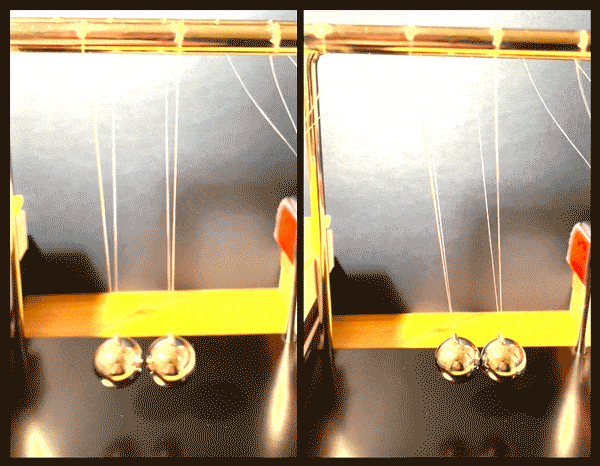MIT Researchers Unlock Exotic, Scalable Qubit by Chance
Adding to the roster of happy, unplanned scientific achievements, and breaking coherence records in the process.
Researchers with the Massachusetts Institute of Technology (MIT) have unlocked a new 10-second record on qubit coherence. Published in Nature, the research provides a doubling of the previous quantum coherence record, an already impressive achievement from just last week. The new record stands atop the discovery of a new form of qubits, based on vibrating pairs of atoms -- also known as fermions. And like so many interesting and revolutionary pieces of science, the research, and its results, were kicked off by a chance discovery.
The team's work focused on investigating the behavior of fermions (essentially atoms with odd half-integer spins). They planned to investigate the behavior of these particles when paired as atoms of potassium-40. In so doing, the researchers cooled the fermions down to 100 nanokelvins (- 273 ºC), temperatures that usually bring about quantum properties of particles, and are used in some of the world's most powerful quantum systems. Then, a system of lasers was used to generate an optical lattice, which trapped the atoms, rendering them observable -- up to a point.
The fermions kept drifting in and out of the lattice's observable area at periodic intervals, almost like pendulums, swinging inside and outside of the observable area. This, in turn, indicated that they were oscillating between two quantum states -- one observable and the other not.
The fermions' behavior in these conditions was what opened the doors to the quantum breakthrough. The paired (and trapped) fermions appeared to be moving in sync as if they were a single molecule, which raised questions of quantum entanglement, the state in which two particles are paired in such a way that forces influencing one qubit to produce the same changes within its pair. Magically (OK, scientifically), this happens irrespective of distance and other mundane considerations from our macro-physics world.

“It’s often in experimental physics that you have some bright signal, and the next moment it goes to hell, to never come back,” said Martin Zwierlein, Thomas A. Frank Professor of Physics at MIT. “Here, it went dark, but then bright again, and repeating. That oscillation shows there is a coherent superposition evolving over time. That was a happy moment.”
The physicists then confirmed the fermion pairs were maintaining a superposition of two vibrational states -- in other words, they simultaneously moved against each other, but also swung together. They did so at a frequency of 144 Hz, which is perceptible to the human ear as a low hum. Then, they managed to interact with this superposition state by applying and varying a magnetic field.
“It’s like starting with two noninteracting pendula," Zwierlein said. "And by applying a magnetic field, we create a spring between them, and can vary the strength of that spring, slowly pushing the pendula apart.”
Stay On the Cutting Edge: Get the Tom's Hardware Newsletter
Get Tom's Hardware's best news and in-depth reviews, straight to your inbox.
The ten-second coherence time of the fermion qubits surprised the researchers, in that it showcased an until-now unseen robustness to qubit pairs. Ten seconds is a lot of time for advanced computing systems, and even more so for probabilistic systems such as quantum computing. So far, the fermion qubits haven't yet been made to interact, which is a required step in actually performing useful quantum computation work. However, the team believes that this is possible, and when achieved, the current design should allow for some 10,000 quantum computations in that span of time.
The 10,000 quantum calculations estimate is based on the researchers' ability to simultaneously manipulate about 400 fermion pairs at a time -- there's likely room to scale. But first, they have to find ways to individually control fermion pairs, which is what would allow them to act as paired quantum computing units, or qubits. They appear already close to solving this problem. But another, deeper one arises in that paired qubits also have to be able to talk to others; it's in this exchange of information - and the formation of qubit gates - that quantum circuits (or quantum operations) can be pursued.
The scientists are confident, however, and say there is a clear path forward. Another one in the myriad of ways the scientific community has already found to bend the will of the infinitely small to the forces of human ingenuity. Perhaps these advances will be used to crack Bitcoin's encryption sooner than expected after all.

Francisco Pires is a freelance news writer for Tom's Hardware with a soft side for quantum computing.
-
Endymio Editor needed on aisle five -- stat!Reply
...a new form of qubits, based on vibrating pairs of atoms -- also known as fermions. The team's work focused on investigating the behavior of fermions (essentially atoms with odd half-integer spins).
Fermions are not atoms. They're not pairs of atoms. They're subatomic particles.
... which raised questions of quantum entanglement, the state in which two particles are paired in such a way that forces influencing one qubit to produce the same changes within its pair.
This isn't what quantum entanglement is either. -
VforV ReplyPerhaps these advances will be used to crack Bitcoin's encryption sooner than expected after all.
And why is that important?